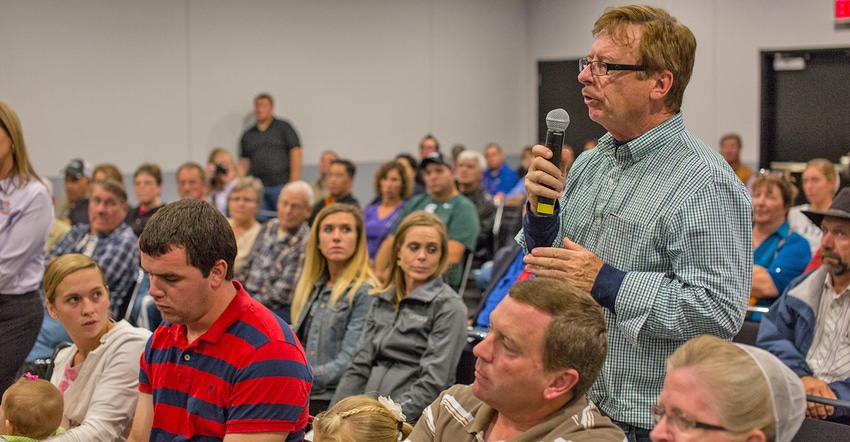April 30, 2018

By Randy Wokatsch
As many of you likely know, the dairy industry — and specifically, dairy farmers — are not in a good place. Many farmers are going into their fourth year of red ink. According to Wisconsin Department of Agriculture, Trade and Consumer Protection license records, we’ve lost more than 500 Wisconsin dairy farms per year, on average, since 2003.
The weak milk market hasn’t slowed production. Many factors, including better feed and cattle genetics, the use of sexed semen, outside investment in megafarms, cheap imported milk from neighboring states, and the Dairy 30x20 program (designed to increase production with incentives), have sustained the flooded milk market. Banks are encouraging expansion of some farms to remain solvent. Small farms that choose not to have large expansions don’t have this option.
According to a Farmers Union Producer Survey in 2016, the responding dairy farmers’ cost of production averaged $15.77 per cwt, overtaking income of $14.81 per cwt for a loss of 96 cents per cwt. Even Organic Valley, the nation’s largest organic milk co-op, posted a loss of $10 million for 2017. This is the dismal situation of our dairy industry.
Farmers Union has led the charge by holding meetings around the state to discuss finding solutions to this crisis. The topics include: how the dairy industry can manage milk supply to give farmers a fair return on their investment; what can be learned from the Canadian supply management system; how farmers, processors and government policy can work together for the common good; and how individuals, farm organizations and other stakeholders can unite to bring about changes. These meetings were well-attended, reflecting how serious the situation has become. More meetings are planned, including joint meetings between Farm Bureau, Farmers Union and other farm organizations.
Why should you care?
So, here is the real question. Why should you care? The answer should be obvious for anyone in the dairy industry. We all should realize by now that we need to chart a different course. What will our countryside look like in 10 years if we do nothing? What happens when the infrastructure supporting smaller farms (i.e., milk pickup, veterinary service) fails? For those of you who aren’t in the dairy industry, what happens will affect you, too. Do you want to drive past abandoned small and medium-sized formerly family-run dairy farms and then the occasional megafarm? Do you want the deterioration of the small towns supported by smaller farmers like myself to continue? How do you suppose the demise of these idyllic farms will affect our tourism industry? How will having mostly large farms affect our groundwater, surface water, roads and the environment at large?
What can we do? A lot! Farmers and others in supporting businesses: Attend farm organization meetings to learn our options to align supply with demand. Come and speak your mind, and encourage your friends and neighbors to do the same. Watch the taped presentation of the Canadian farmers explaining their system at wisconsineye.com. There are many fallacies and half-truths out there about the Canadians. One is that Canada’s dairy industry is government-run. It’s actually farmer-run after being initiated through legislation.
Another action: Support reinserting the supply control component of the Margin Protection Program. The removal of it all but assured the failure of the program and helped create our current situation. The recent tweaks to the program aren’t enough.
Nonfarmers: Pay attention to the discussion! Realize this affects us all. Tell your legislators that you don’t like the path you see the dairy industry is going down and the subsequent negative ripple effects to rural Wisconsin. Ask them if they are listening to us and trying to help.
My 55-cow dairy farm has been here since 1901. We are the fourth generation. It’s heartbreaking to hear the similar struggles of other farmers attending the recent meetings. I believe we can turn things around, or if not, at least slow the current trend. But this can only happen if farmers and nonfarmers become informed and engaged, and work toward the goal of saving the legacy of Wisconsin’s family dairy farms.
Wokatsch owns and operates a 55-cow dairy farm near Marathon, Wis.
You May Also Like




